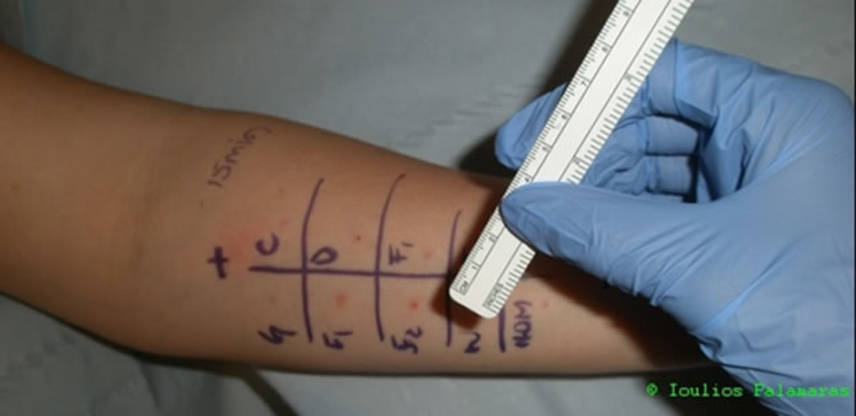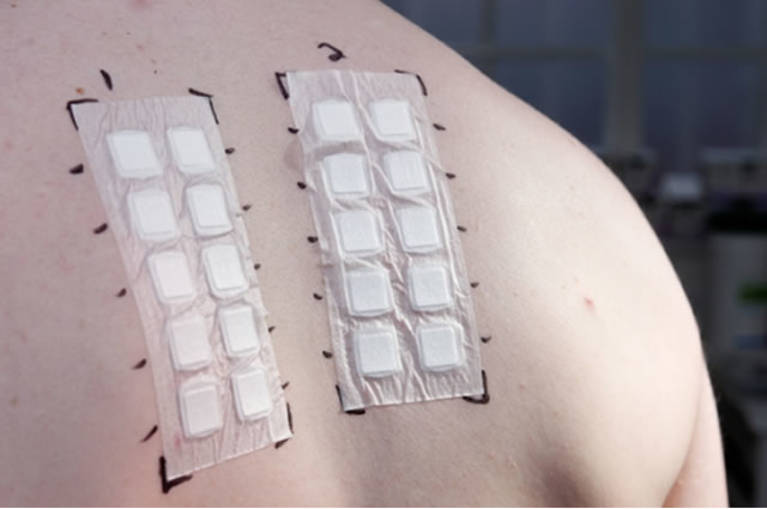Skin Allergies
Dr Palamaras was the former Lead Consultant for skin allergy at Barnet and Chase Farm NHS Trust Hospitals and was trained at St Mary’s Hospital at Paddington, London.
Dr Palamaras is a member of the British Society for Cutaneous Allergy (BSCA) and he is very experienced in assessing, investigating, diagnosing and managing patients with skin allergy and/or eczema, contact dermatitis, urticaria and/or angioedema and most common work-related skin allergies.
Many people are affected by an allergy at some time in their lives. Conditions such as asthma, eczema and hay fever can be associated with allergies. Often, apart from the sufferer, there can be other members of the family with a food- or other allergy-related condition.
Allergy can present with itchy, "greety" eyes, runny nose and often with sneezing when near a source of allergy (e.g cat or dog dander) or with a skin rash. Sometimes, but rarely, it can be so severe that may cause a shock (anaphylactic shock) that if left untreated may even lead to death.
In infants, allergy may also present as feeding difficulties, vomiting, colic, restlessness, constipation or even poor growth.
There are two types of skin allergies: an immediate type and a delayed one.
More Information
Immediate Type
Immediate Type of allergy occurs fast, usually within 20min to 1h after contact with the allergen, and presents on the skin as red, raised ("bumpy"), very itchy swellings of the skin (called weals) with or without other symptoms such as swelling of the eyes, lips or even the whole face, tightness of throat and rarely difficulty in breathing. In medicine, this condition is called urticaria (skin rash) and angioedema (skin swelling) but more commonly is known as hives or nettle rash.
Urticaria or angioedema is being caused by a release of histamine from particular skin cells called mast cells and in around half of the cases no cause can be found. It may usually last for few hours or up to one day but sometimes can even take up to a week to go away. Hives/nettle rash can be triggered by many potential allergens such as food, medicines (especially aspirin and related pain killers, penicillin, vaccinations and blood pressure tablets), pollens, or even physical factors such as psychological stress, cold, heat, exercise or pressure (e.g. a tight bra).
There are two different types of tests to check the immediate type of allergy: a blood test called RAST, or a test on the skin which checks the same allergens as the RAST test and is called Skin Prick Test.

Delayed Type
Delayed type of allergy occurs slowly, usually within 24-48h after contact with the allergen, and may present on the skin as eczema or sometimes inside the body as reflux or diarrhoea. Eczema means dry skin; the skin characteristically presents as very dry, itchy, red, scaly and flaky. However, when the eczema is acute and infected, it presents as wet, weeping patches that are both itchy and sore.
This type of allergy usually occurs after repeated contact with a substance/allergens such as cosmetic or medicated creams, hair dyes, make up products, leather (shoes, belts), costume ("fake") jewellery, black henna tattoos –very common!-, or even foods. This type of allergy sometimes may take years to develop, after the person who has been in contact with the allergen.
The test to check the delayed type of allergy is called Skin Prick Test.

